Where to play golf in Northeast Florida: The First Coast from Jacksonville Beach south to Daytona Beach

Florida is synonymous with golf. It’s the Sunshine State, where fairways roll for miles and there’s always another course to sample – more than 1,250 of them in all.
Want to play where the top PGA pros live? These days, that’s Jupiter on the southeast coast. On vacation with the family? Plenty of tee boxes are available around Orlando and Disney World. Looking for a retirement home where you can tumble out of your own bed and land on a fairway? Naples and its surrounding towns are ground zero for those fortunate transplants. Three top-ranked courses in one comprehensive, golf-focused resort? Streamsong, just southeast of Tampa, ticks that box nicely.
Just about anyone who travels to play Florida golf is at least somewhat familiar with those regions. But what if you’re looking for something different, maybe a coastline where the game is on an uptick? Keep reading, because the region south of Jacksonville has something for any golfer, ranging from elite PGA Tour courses to municipal standouts with long histories and cheap green fees. And it doesn’t hurt at all that this First Coast, as it is called, is the first bit of Florida that anybody driving south on I-95 will reach.

The pool scene at Hammock Beach Golf Resort & Spa (Courtesy of Hammock Beach)
Golf in Northeast Florida roughly can be categorized as three geographic areas along an 80-mile stretch of coast starting at the Georgia state line. There’s the smaller area north of Jacksonville proper, with the resorts at Amelia Island and a handful of courses. Continuing south, there’s Jacksonville itself, the largest city in Florida by population and the largest in the contiguous United States as measured by land mass. And then there’s south of Jacksonville all the way down toward Daytona Beach, a stretch that includes Ponte Vedra Beach, home to the PGA Tour.
The top-rated courses in the Golfweek’s Best public-access rankings are found in this stretch south of Jacksonville, so this story takes us to this region dotted with beach resorts, high-end gated communities, daily-fee destinations and even a recently revamped municipal that shouldn’t be missed. The full scope of green fees and amenities to suit any budget. Oceanside holes. Inland holes. Old layouts and renovated tracks. Even one course with three, six, 12 or even 18 holes, depending on how you want to play it. Options abound.
Mention the region and most golfers flash right to TPC Sawgrass in Ponte Vedra Beach. Completely understandable. The Players Stadium Course – and, of course, its famed par-3, island-green 17th – hosts the PGA Tour’s Players Championship each year. It’s the top-ranked public-access layout in Florida, home to one of Pete Dye’s monsters.
But just as there is more than one island green along this stretch of coast, there is much more to the region.
“People are always aware of TPC Stadium and the Players, but they are often surprised by everything else,” said David Reese, president of Florida’s First Coast of Golf, a non-profit organization established nearly 30 years ago to promote the region. “Once people set foot in northeast Florida, they are blown away. … You’ve got the beaches, of course, but there’s a lot more to do. I could go on for hours, so many courses.”
TPC Sawgrass
Florida doesn’t have mountains. Or even many hills, really. What Floridians consider elevation changes would draw a snicker from other regions: “That green is perched up about 6 feet, so it plays uphill – half a club more.” With a few exceptions, the ground just doesn’t do much at most potential golf sites until course designers bring in the bulldozers.

No. 17 at the Stadium Course at TPC Sawgrass in Florida (Stan Badz/PGA TOUR)
What Florida does have is water. Everywhere. Salt water. Fresh water. Swamps. Rivers. Lakes. It’s a damp state, and not just the humidity. For golfers – and willfully ignoring recent changes to nomenclature by the USGA that push the term “penalty areas” – they’re all water hazards at one time or another. And none of them plays a larger role in Florida golf than the small pond looming on Nos. 16 and 17 at the TPC Sawgrass Players Stadium Course in Ponte Vedra Beach. This stretch of shoreline is known as the First Coast because it is home to St. Augustine, the oldest continuously occupied European settlement in the United States that now is an inviting, riverside strolling district packed with restaurants, bars and pirate-themed tchotchkes. That theme of first on this coast extends to the Players Stadium Course, especially its penultimate hole. The 17th is the best-known hole in the state, 137 yards of water, fear and made-for-TV glory dreamed up by Alice Dye and built by her husband, famed designer Pete Dye. The course is the annual home to the PGA Tour’s Players Championship, an anchor site broadcast and streamed each year into living rooms around the world. First also applies to the Stadium Course’s rankings among great layouts. It is No. 1 in Florida on Golfweek’s Best Courses You Can Play list for public-access tracks, tied for No. 12 on the list of Top 100 Best Courses You Can Play in the U.S. and tied for No. 21 on the Modern Courses rankings for all courses built in or after 1960 in the U.S. “I call the Players Championship the best four-day global commercial that northeast Florida could ever ask for,” Reese said. “I get calls from all over the country and all over the globe, just saying how great it looks. By far, that’s our ground zero, our stick in the ground. When everyone sees the Players and TPC Stadium, they can immediately dial in on this area.” Even when considering the fear on No. 17 tee box, the pros atop the leaderboard can sometimes make the Stadium Course look almost easy during the Players. It isn’t – for many amateurs who tee it up there, it’s the most difficult course they ever will tackle. There are hazards out there the pros never have to think about, but for the rest of us, it’s trouble everywhere. Rough, water, deep bunkers, trees – take plenty of golf balls and keep your scoring expectations in check. No. 17 clearly is the star, a striking, in-your-face one-shot challenge built to inspire awe and trepidation. In about a dozen rounds there, this writer has hit the green, hit it close, hit the water and one time even managed to park a ball on the walkway to the island – made par from the carpet in the State Amateur. Anyone who ever picks up an 9-iron should make the pilgrimage and take their shot at No. 17.
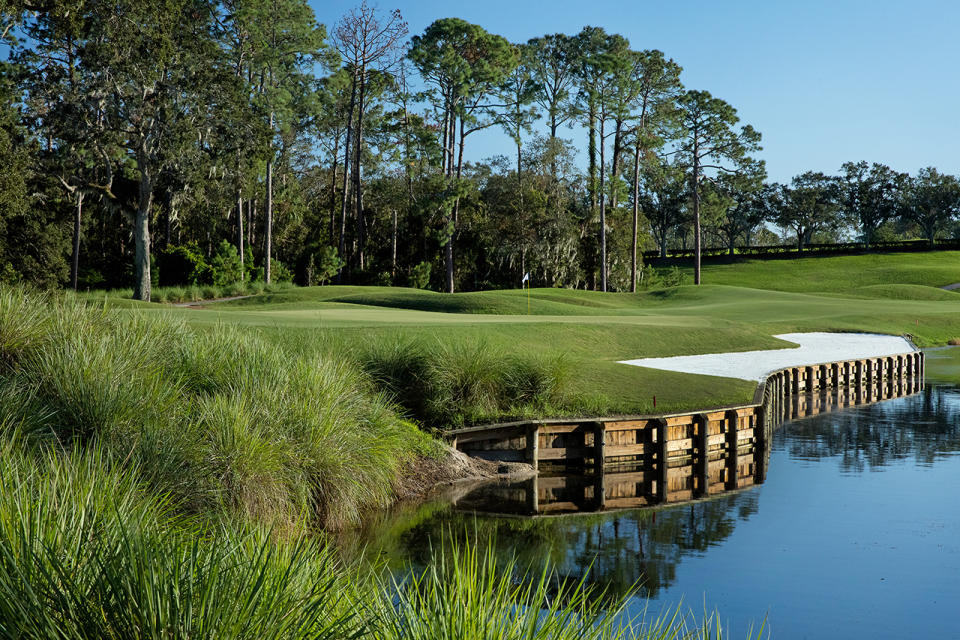
Dye's Valley at TPC Sawgrass in Florida (Courtesy of TPC Sawgrass)
Those players also shouldn’t miss the course next door. Immediately adjacent to the Stadium Course is TPC Sawgrass’s Dye’s Valley, built and named for the same architect who constructed the adjacent masterpiece. Dye’s Valley isn’t as well-known as its neighbor, of course, but it has hosted the Korn Ferry Tour several times and the stroke-play portion of the U.S. Amateur in 1994, won by Tiger Woods in match play a few days later at the Stadium Course. Dye’s Valley isn’t nearly as difficult as the Stadium Course, but that doesn’t mean it’s a pushover. The fairways are a bit wider and the rough tends to be a bit less punitive, but players might wish for a bit more of the tall grass to stop a ball rolling toward the water on nearly every hole. Interesting greens, architectural subterfuge, even a chance to make a few more birdies or pars – Dye’s Valley could be a household name for Florida golfers if it wasn’t overshadowed by its ultra-famous neighbor.
Hammock Beach
Fifty miles down the coast from Ponte Vedra Beach in Palm Coast lies a somewhat surprising Florida rarity: a golf course on an oceanside beach. The Sunshine State features plenty of holes built on ponds, lakes, creeks, bays and almost all manner of wet. But there are very few holes close enough to either the Atlantic or Gulf of Mexico where players could shoot a stray Titleist out to the sunbathers.
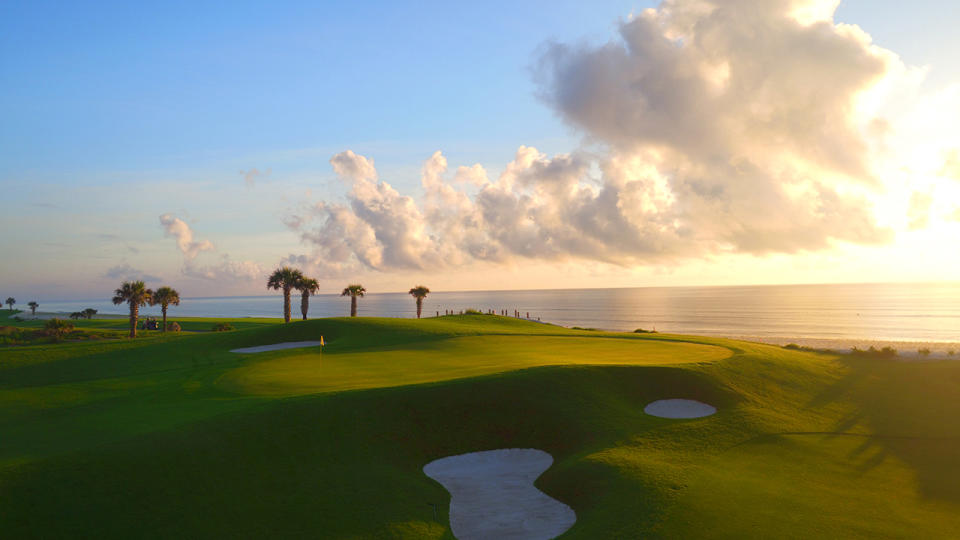
The Ocean Course at Hammock Beach Golf Resort & Spa (Courtesy of Hammock Beach)
That all changes at the Ocean Course at Hammock Beach Golf Resort & Spa, where Jack Nicklaus plopped six holes close enough to the water’s edge that golfers can smell the beachgoers’ sunscreen. The water theme extends across the sprawling resort, which features massive condo towers with tremendous views, rental villas, all the expected top-end resort amenities and one of the best pool scenes in Florida, complete with a water slide that ensures a golfers’ kids won’t miss any player sneaking out for a morning 18. From the start, the resort’s focus on saving much of the best acreage for golf is made clear by the giant range tucked tight to the beach, less than 100 yards from the dunes and offering a panoramic view of the shore. At most places in Florida, this piece of land would overflow with high-rise rentals and million-dollar cottages, possibly in pastels. At Hammock Beach it’s just the range, and for golfers, that’s perfect.

The pool scene at Hammock Beach Golf Resort & Spa (Courtesy of Hammock Beach)
The Ocean Course opened in 2000 and was renovated after a hurricane passed over in 2016, with new paspalum playing surfaces providing improved and hardier turf. Twelve of the holes are inland, at times passing through neighborhoods but with plenty of width to avoid the ubiquitous water hazards. As with all coastal layouts, the level of difficulty on any given day is largely determined by the wind. After an opening seven holes tucked away from the waterfront, the landscape changes at the par-3 eighth, playing directly toward the beach between condos and mansions with sometimes crazy crosswinds sending balls down a steep bank right of the green. The vantage from the green is all sea and sand, and that theme continues to No. 9, a long par 4 with more mansions way off to the port side and nothing but beach to starboard. The back nine darts directly inland for five holes before revisiting the beach on No. 15, a long, uphill par 4 to a green perched high on the dunes. Players then swing away on the dogleg-left-around-water, par-4 16th with the ocean directly behind the tee. No. 17, a short par-3 over a pond, plays directly back toward the Atlantic. The whole affair wraps up on the long par-4 18th alongside the beach, almost a mirror image of No. 9 but in the opposite direction, with the resort to the right and the ocean on the left. From there, players can retire to a restaurant patio with a long view of 18 and the salt water beyond. Players on a buddies trip might linger here for hours, but golfers with families in tow can make the short walk to the pool decks and forget about golf altogether while drifting on a tube in the lazy river.
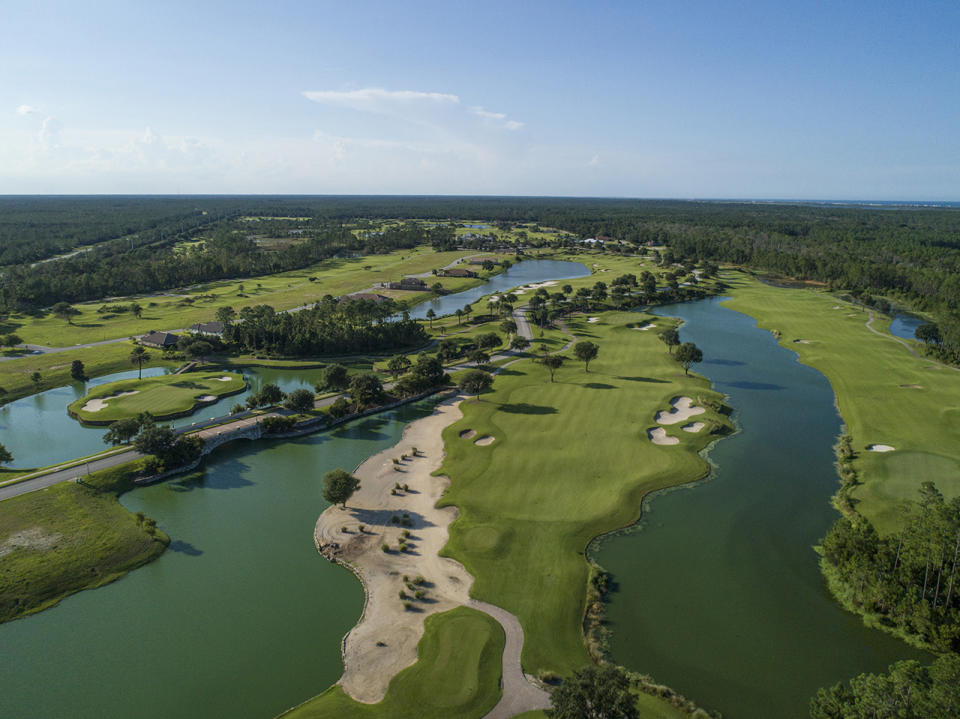
Hammock Beach Golf Resort & Spa's Conservatory Course in Florida (Courtesy of Hammock Beach)
The Ocean Course ranks No. 11 in Florida on Golfweek’s Best Courses You Can Play list for public-access layouts, and it’s not the resort’s only course to show up in those rankings. A 20-minute drive inland takes players to the Conservatory Course, a Tom Watson design that sits at No. 15 in Florida. The Conservatory is bigger, wider and, in terms of architectural shaping, bolder than even the Ocean Course, with mounding and hazards that require constant attention. In July the track wrapped up the main portion of a bunker renovation that should further improve the conditioning of what already is one of the best-kept public-access layouts in the state.
Ponte Vedra Inn & Club
The 17th hole at the Stadium Course might have the most famous island green, but it wasn’t the first, not even in Ponte Vedra. That honor belongs to No. 9 of the Ocean Course at Ponte Vedra Inn & Club just a few miles up A1A from TPC Sawgrass.

The Ocean Course at Ponte Vedra Inn & Club (Courtesy of Ponte Vedra Inn & Club)
Originally opened in 1931 with a design by British architect Herbert Strong, the Ocean Course has been renovated several times, most recently in 2020 by area resident Bobby Weed. Among the changes, the practice area was expanded, the first tee was turned into a combination tee and events area, and the back nine was rerouted in places. Most importantly, the greens were rebuilt and lowered with the new complexes flatter to the ground, presenting more approachable targets that better fit the scale of their environments. Well-traveled players have been known to stick up their noses when describing a course as a “resort layout,” somehow implying such a track might not share the same value as a “championship course.” Ponte Vedra Inn’s Ocean Course flips that script. This place is fun, built for the amateur game. Tucked a few hundred yards inland of the Atlantic on a series of canals, there’s no shortage of water, but typically there’s plenty of room to miss. Along with the island par-3 ninth, the stars of the Ocean Course are the greens – never crazy but severe enough to grab your attention and challenge any careless stroke. Somewhere on the back nine I began to realize that if this is resort golf, I need to stay at more resorts. The Ocean Course isn’t ranked among Golfweek’s Best top 30 public-access courses in Florida, but after the most recent renovation, it would not be a surprise to see it climb onto that list.

Ponte Vedra Inn & Club (Courtesy of Ponte Vedra Inn & Club)
Ponte Vedra Inn & Club also has a sister course, the shorter Lagoon, and the club has a strong membership. For everyone else, the refreshed beachside accommodations, restaurants, bars and pool scenes are top notch. The place isn’t exactly a Florida-priced bargain – historic AAA Five-Diamond properties never are – but it’s a top-shelf, family-oriented destination that also could serve as the perfect hub for a well-heeled buddies trip.
World Golf Hall of Fame
For players craving a taste of history and more traditional Florida courses, there’s plenty of that at the two courses at the World Golf Village and World Golf Hall of Fame in St. Augustine: the King & Bear, and the Slammer & Squire. The courses offer distinct routings and a chance to pop in at the Hall of Fame, home to memorabilia from the four players whose names grace the courses and plenty more.
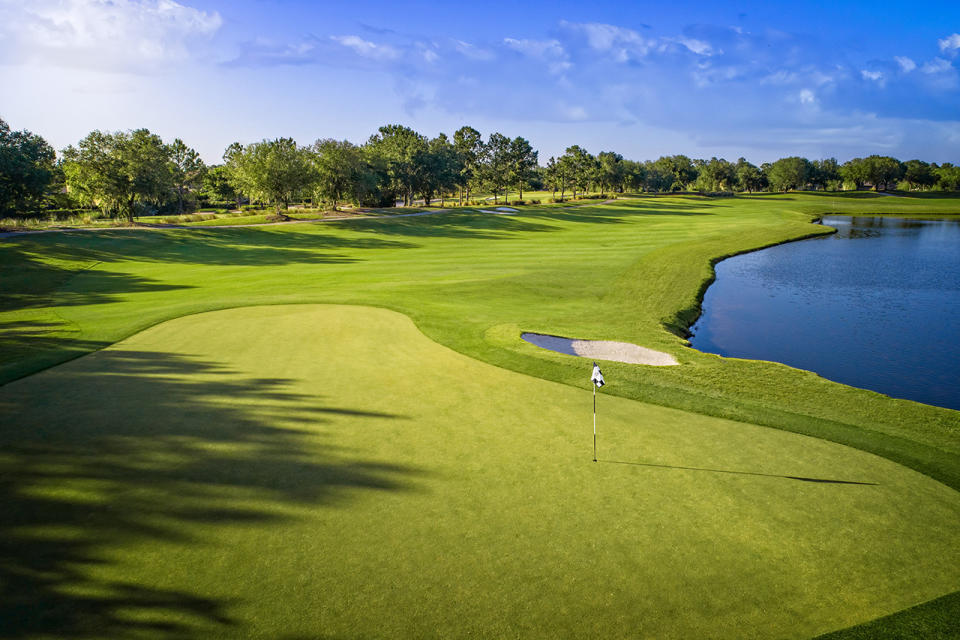
The King & Bear at World Golf Village and the World Golf Hall of Fame in Florida (Courtesy of the World Golf Village)
The King & Bear, with 18 holes built by Arnold Palmer and Jack Nicklaus in 2000, is the wider and more forgiving of the two layouts. Billed as the only course in the world co-designed by the two legends, it presents a fun chance to take mighty cuts off the tee – Palmer and Nicklaus enjoyed the long ball, after all – and still find room to recover from a few foul balls. The layout features what Palmer called one of his favorite holes that he designed, the 360-yard, par-4 15th with water all down the right and a green perched atop boulders.

The Slammer & Squire at World Golf Village and the World Golf Hall of Fame in Florida (Courtesy of the World Golf Village)
The Slammer & Squire is much more old-school Florida golf, with tighter fairways nestled between thick native foliage and frequent water. Design credit goes to Weed in collaboration with a different pair of Hall of Fame legends, Sam Snead and Gene Sarazen. Offering close views of the World Golf Hall of Fame’s tower, the Slammer & Squire perhaps requires more thought and patience than the King & Bear. Its many elevated greens also exact a steeper price for approach shots that fail to find the putting surfaces.
Jacksonville Beach Golf Club
People point out all the time that many – most? – of the Golfweek’s Best Courses You Can Play are expensive. They’re right, because the best of anything almost always costs more. But there are alternatives.
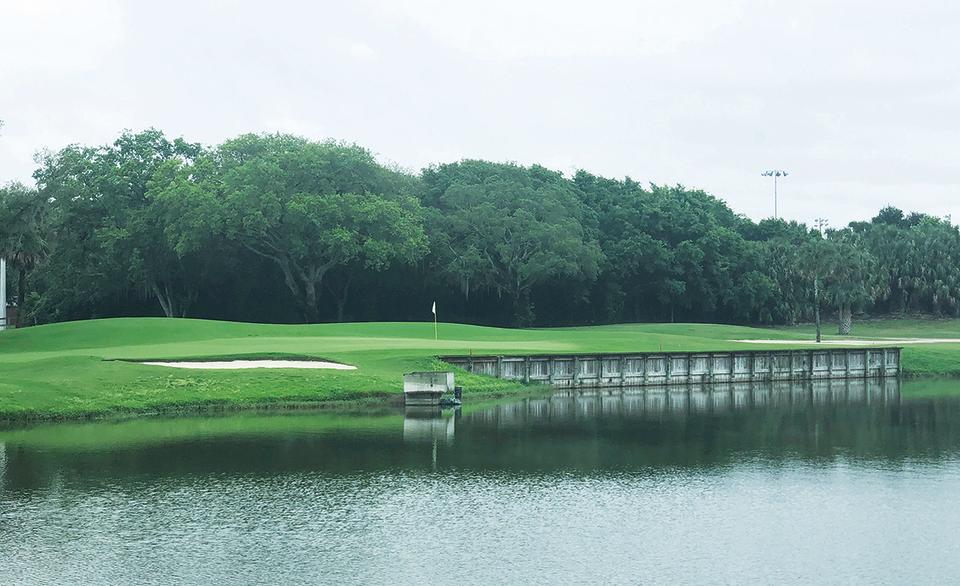
Jacksonville Beach Golf Club (Jason Lusk/Golfweek)
Enter Jacksonville Beach Golf Club, known locally as Jax Beach. In its beginning in the 1960s, this was a nine-hole private course. The city took it over decades ago and transformed the tract of land into a player-friendly but scraggly 18 holes. It was a complete facelift by architect Harrison Minchew in 2018 that transformed Jax Beach into a can’t-miss for budget-conscious lovers of muni golf. Nobody will confuse Jax Beach for one of the ocean holes at Hammock Beach – the view across the netted driving range to the baseball fields is all muni. But that misses the point entirely. This is a fun, fast layout shared by retirees and bespoke Tour dreamers sporting expensive leather carry bags and tall visors. It’s a sub-$50 stroll through more of what golf should be – good, creative holes and greens surrounds to challenge any player – with some of the best putting surfaces found at any course where players line up waiting for the twilight rate to kick in. Bonus points should be awarded for hitting the old boat that serves as a driving range target. The whole vibe is fantastic – hit it and keep walking. Jax Beach doesn’t show up in Golfweek’s Best rankings, and it doesn’t need to. It sits perfectly on its sometimes-pinched piece of land, serving its community with a golf product the locals are proud of.
The Yards, LPGA International, a new course and more
Interstate 95 is a bore, one of those flat highways with little more interesting to observe than big Publix trucks, bikers and billboards. Get off that road, however, and you will learn why nearly 1,000 people a day move to Florida. It’s the sun, the mild winters, salt water, general affordability and sometimes even the early-bird specials. Golf does its part in that invitation. It doesn’t hurt that there is a huge mix of options along the state’s northeast coast.

A projection of how the new Stillwater course will look in Florida (Courtesy of Stillwater)
Weed has designed a new layout, Stillwater Golf and Country Club, halfway between St. Augustine and Jacksonville that will be the first entirely new course in St. Johns County in more than 15 years. And Weed promises the layout scheduled to open in the fall of 2021 will be different than most Florida courses, with no traditional rough, distinctive bunkering and areas of crushed shells. Golfers looking for another different kind of experience should check out The Yards in Ponte Vedra Beach, not far from TPC Sawgrass. The tract of land formerly featured a standard 18-hole layout designed by Arnold Palmer that went by a slew of names: Hidden Oaks, Thousand Oaks, Ponte Vedra Golf and Country Club, and Oak Bridge.
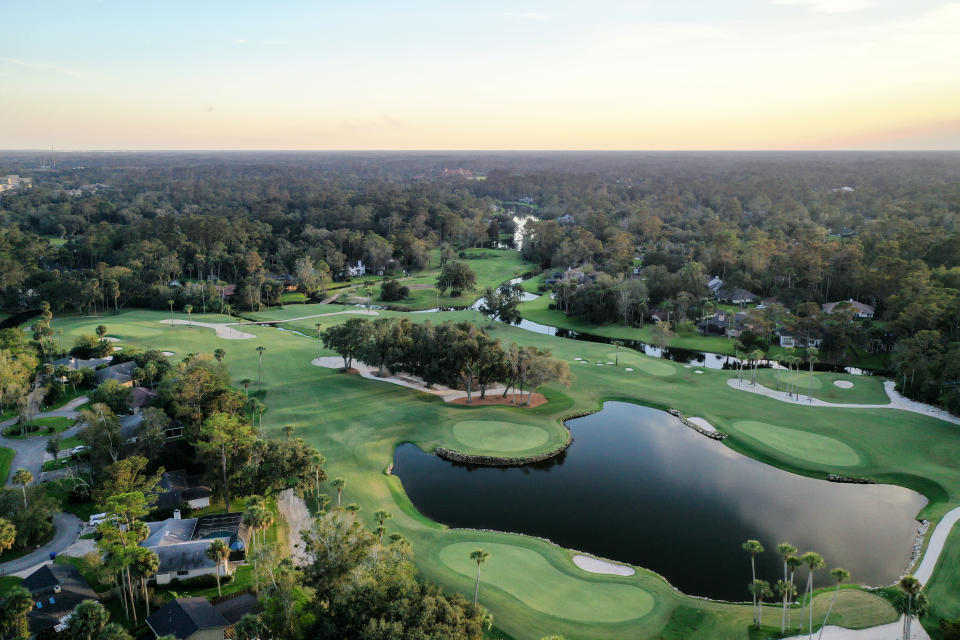
The Yards in Florida (Courtesy of The Yards)
New owner David Miller bought the property in 2016 and has converted it into a 12-hole, 3,695-yard layout with a short, three-hole inner loop of par 3s playing around water. Players have all kinds of options on how many holes to play – three-, six-, nine-, 12-, 15- and 18-hole routings are available. The entrepreneurial Miller is focused on providing a fun, flexible experience more so than he’s worried about par.
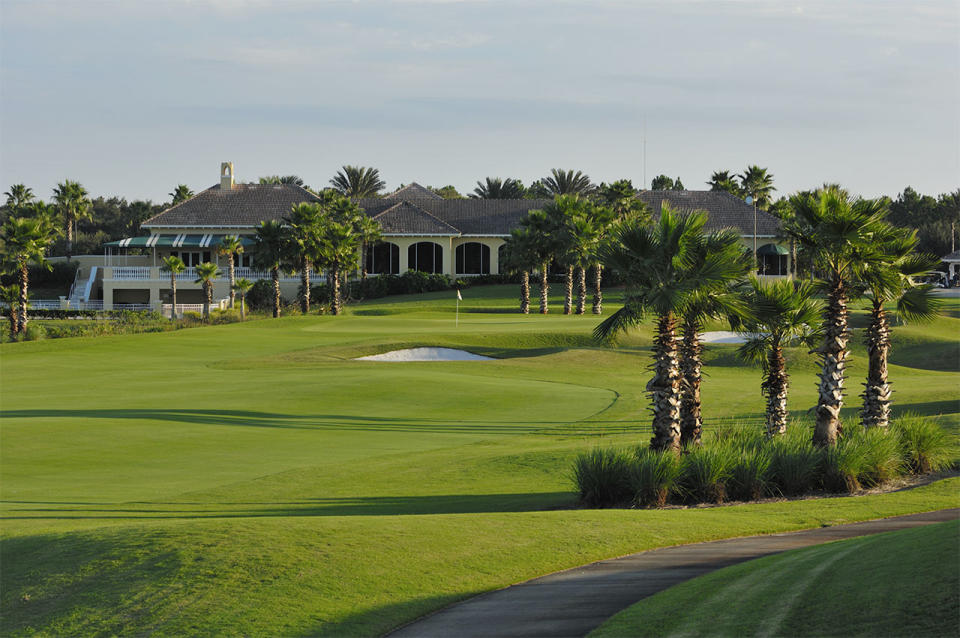
LPGA International (Courtesy of LPGA International)
Solid public-access golf keeps stacking up along I-95 southbound, with LPGA International’s two courses in Daytona Beach in better shape than at any time in recent memory because the current owners purchased the courses, spent lavishly to improve them and hope to flip them at a profit. Also worth a go-round are a handful of bargain-priced community tracks such as Daytona Beach Golf Club’s South Course, which sports a design credit by famed architect Donald Ross despite showing its age – it’s no Pinehurst No. 2, but it is a fun-enough, sometimes quirky bargain layout for a quick 18-hole stroll. It’s all in keeping with the theme of something for everyone, which is as Florida as it gets. Beach golf, bargain golf, hard golf, easy golf. There’s plenty of it along the First Coast, in all its many different forms.
1
1

